
Cherry Laurel, Common Laurel, English Laurel Stock Photo Image of english, shrub 170655746
Looking for Cherry Laurel Plant? We have almost everything on eBay. No matter what you love, you'll find it here. Search Cherry Laurel Plant and more.
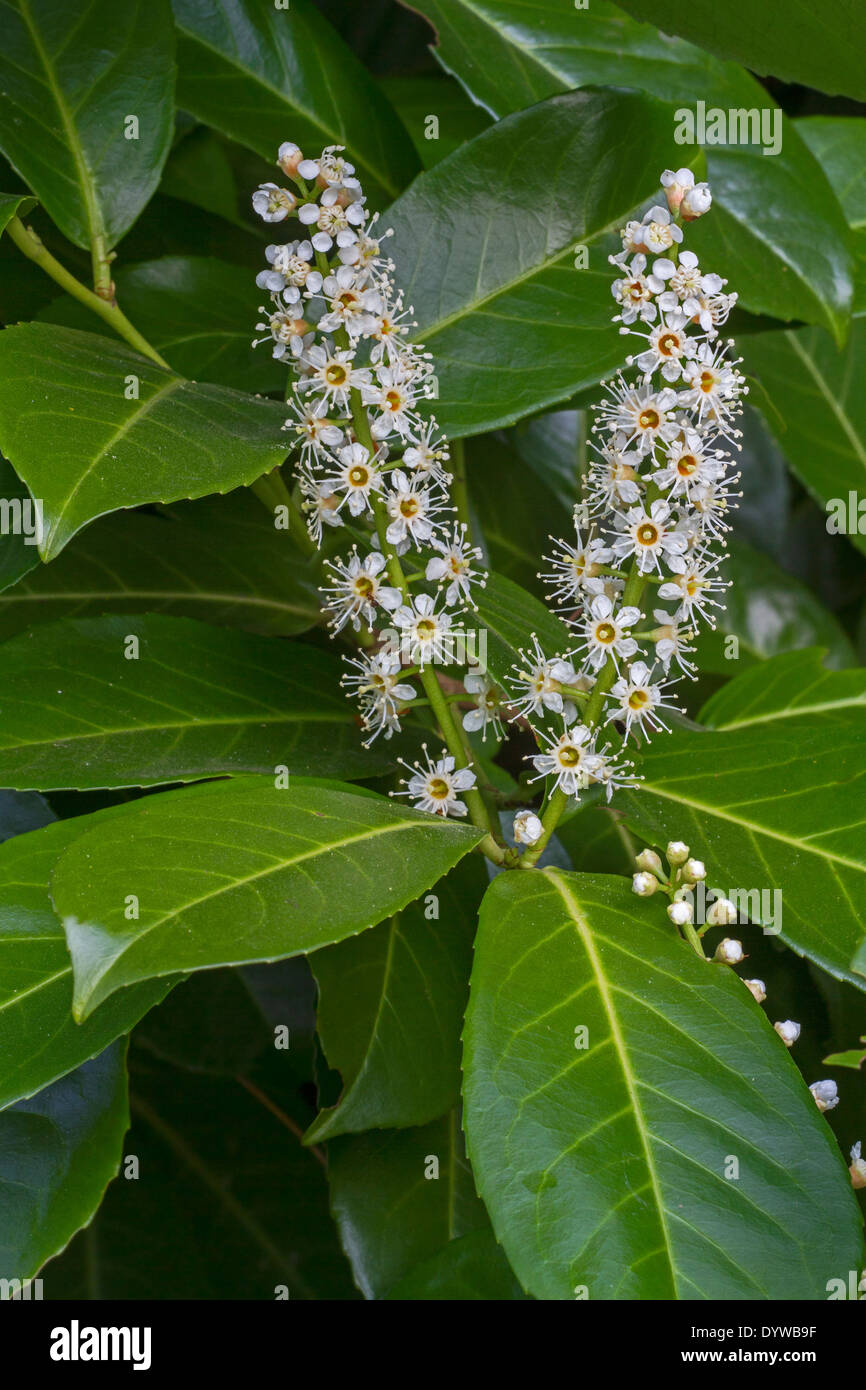
Cherry laurel / common laurel / English laurel (Prunus laurocerasus Stock Photo 68784507 Alamy
The tiny clusters of cream-colored flowers that arrive in the spring are pleasantly fragrant and the namesake cherry-like fruit is devoured by birds in late summer. The English laurel thrives with more direct sun in cooler climates, while it prefers some shade in more extreme heat zones.
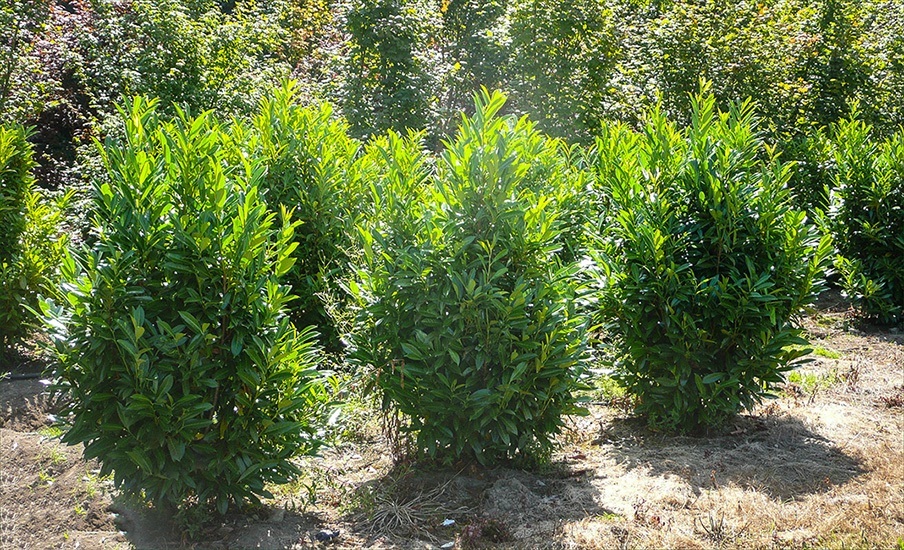
English Cherry Laurel For Sale Online The Tree Center™
Prunus laurocerasus commonly called cherry laurel or English laurel is a broad, dense, spreading, evergreen shrub that in cultivation typically matures over time to 10-18' tall with a spread to 20-25'. It is native to southeastern Europe and southwestern Asia where plants in the wild may become quite tree-like, eventually reaching 30' in height.
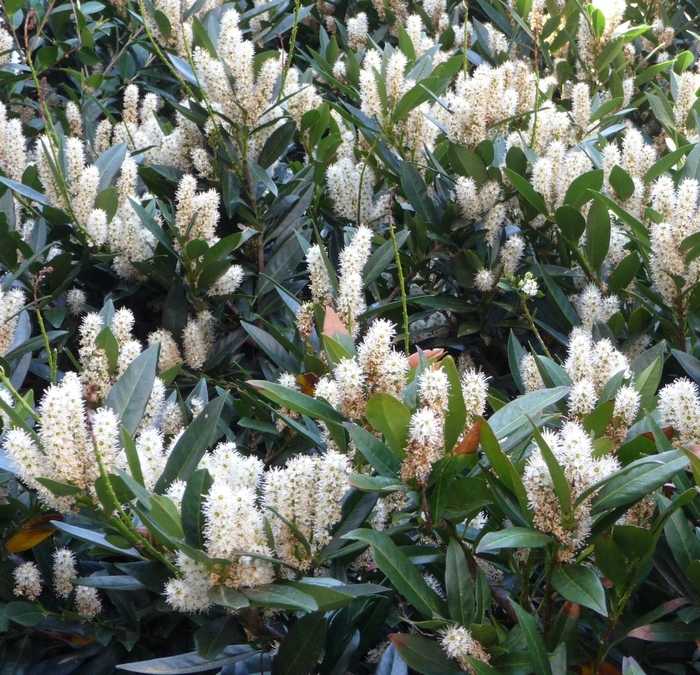
Prunus laurocerasus 'Otto Luyken' Otto Luyken Cherry Laurel Gateway Garden Center
What Are Cherry Laurel Shrubs? A member of the Rosaceae family, Prunus laurocerasus is a stunning evergreen shrub that originates in southeastern Europe and Asia Minor. Hardy in USDA Zones 6 to 8, cherry laurels typically reach mature heights of 10 to 20 feet, with spreads of about 20 to 30 feet.

PlantFiles Pictures Prunus Species, Cherry Laurel, Common Laurel, English Laurel (Prunus
Prunus laurocerasus, also known as cherry laurel, common laurel and sometimes English laurel in North America, is an evergreen species of cherry ( Prunus ), native to regions bordering the Black Sea in southwestern Asia and southeastern Europe, from Albania and Bulgaria east through Turkey to the Caucasus Mountains and northern Iran. [2] [3]

Cherry Laurel, Common Laurel, English Laurel Stock Photo Image of cherry, spring 169223464
The cherry in the name is for the berries. They begin green, turn bright red, and finally black. English laurel plants are hardy in USDA zones 7 through 9. English Laurel Landscape Use As a compact shrub that grows low and fills in densely with leaves, this is an ideal border plant.

How to Successfully Grow Cherry Laurels A Field Guide to Planting, Care, and Design on Gardenista
Commonly known as Cherry Laurel or English Laurel, Prunus laurocerasus is a vigorous, broad, spreading evergreen shrub prized for its dense, glossy foliage and creamy-white flowers. Prunus laurocerasus: An In-depth Look Cherry Laurel belongs to the Prunus genus, including apricot, cherry, peach, or almond trees.
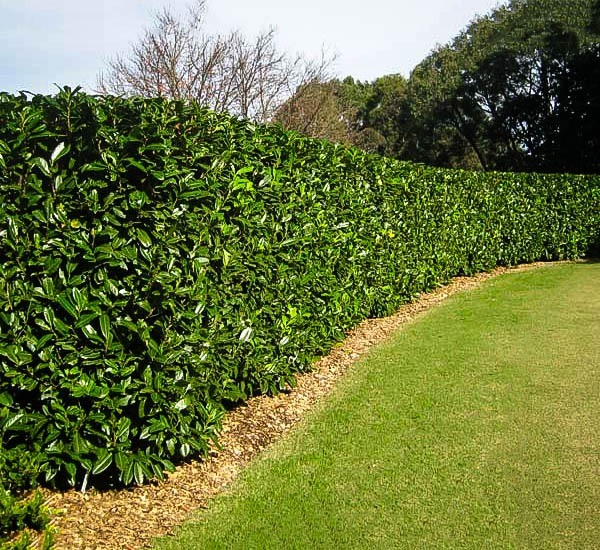
English Cherry Laurel For Sale Online The Tree Center™
Prunus Laurocerasus, usually named Cherry Laurel, Common Laurel, or English Laurel in North America, is a species of evergreen shrubs in the Prunus genus. Cherry Laurel plants are originated in regions that border the Black Sea in southeastern Europe and southwestern Asia.

Cherry Laurel, English Laurel (Prunus laurocerasus) My Garden Life
Cherry laurel is a large evergreen shrub or small tree in the genus Prunus and the family Rosaceae. A cherry laurel shrub can grow between 20 and 30 ft. (6 - 9 m) tall. However, it is easy to maintain a height of 3 - 6 ft. (1 - 2 m) as an evergreen privacy screen. The name cherry laurel comes from its genus and the shape of the leaves.

Cherry Laurel, Common Laurel, English Laurel , during Flowering Stock Photo Image of laurel
Cherry laurel is a salt- and pollution-tolerant shrub. Butterflies, bees, and birds are attracted to this plant. Prunus laurocerasus is spread by suckering from the root system and by seeds which are frequently widely dispersed by birds who eat the fruit. Above: Cherry laurel, blooming in Berlin. Photograph by Sebastian Rittau via Flickr.

PlantFiles Pictures English Laurel, Common Laurel, Cherry Laurel (Prunus laurocerasus) by
What is Cherry Laurel? Whether you want a lovely specimen tree or an attractive living hedge, cherry laurel shrubs (Prunus laurocerasus) are a beautiful addition to any landscape.Native to the eastern Mediterranean --the Balkans, Asia Minor, and areas bordering the Black Sea-- this attractive, upright, evergreen shrub or small tree grows from 15 to 40 feet (4.5-12 m.) in height with a 10 to 35.
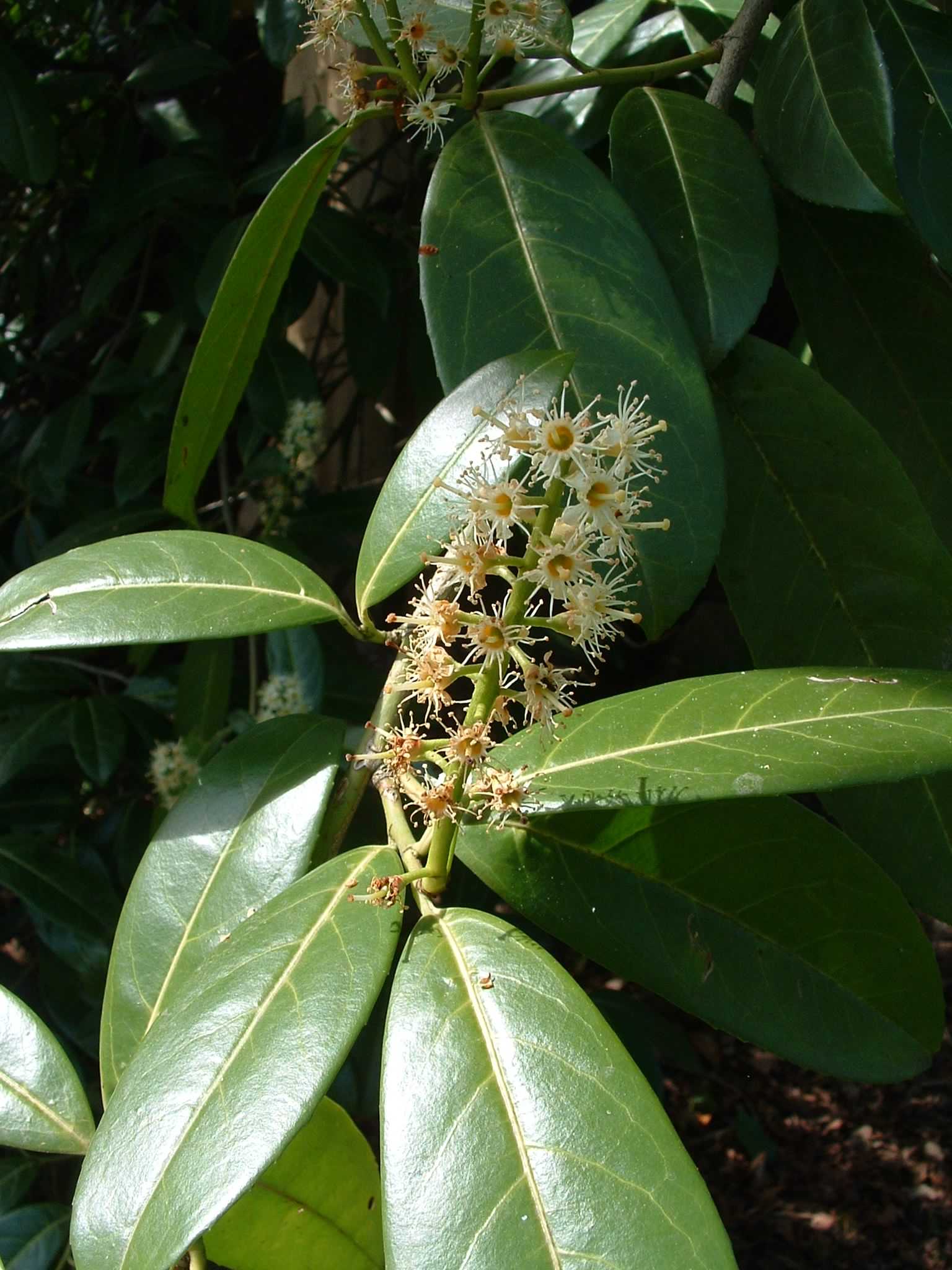
Cherry Laurel Prunus laurocerasus, species information page. Also known as English Laurel
'Otto Luyken' cherry laurel is a compact cultivar evergreen shrub that grows to 3 to 4 feet tall and spreads to 6 to 8 feet. Over time it can grow 6-10 feet tall. It has upright stems, dark green glossy leaves, and fragrant, small, creamy white, cup-shaped flowers that are arranged in 3 to 6-inch long racemes. Flowering occurs from April to May.
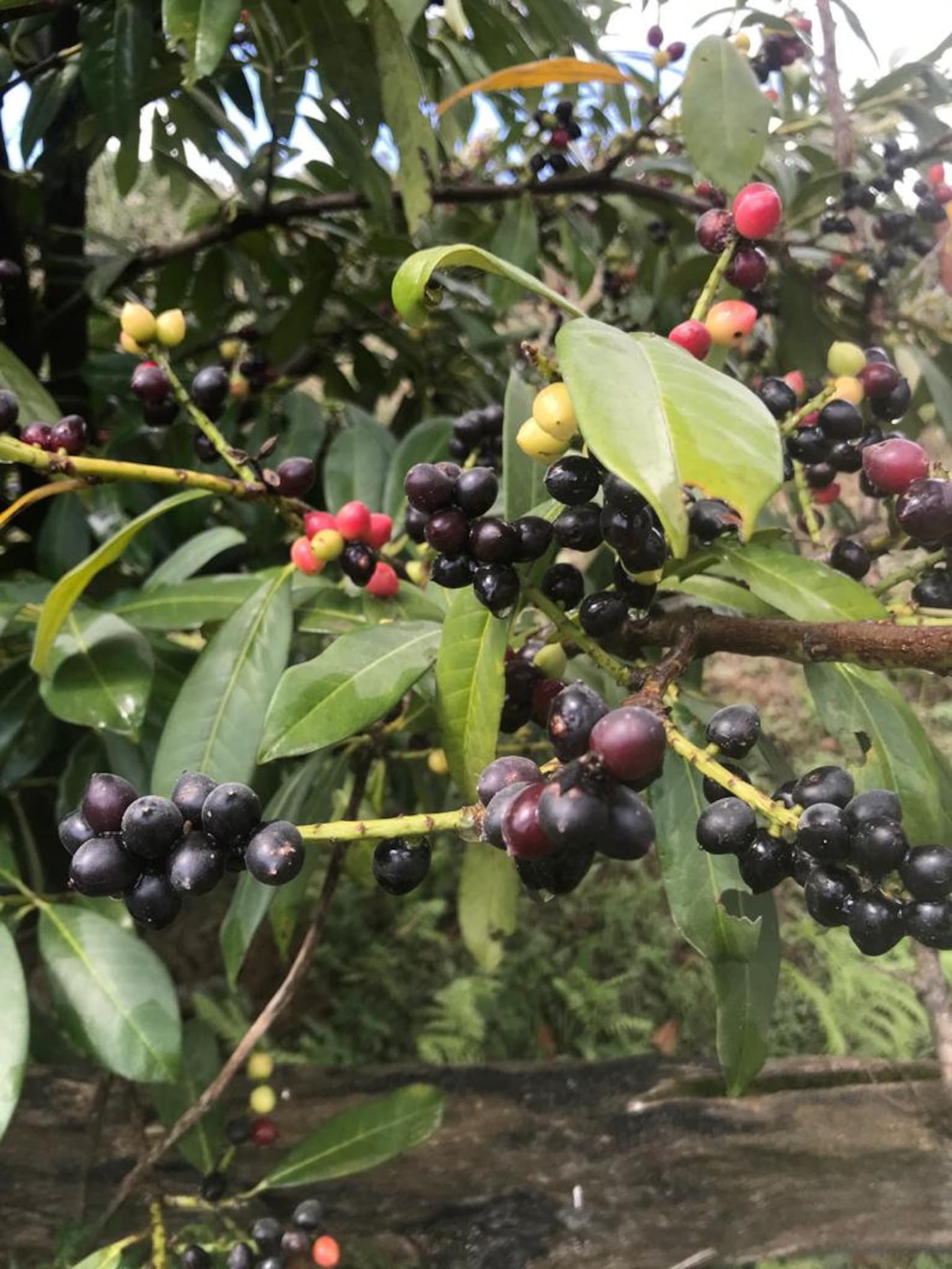
Cherry Laurel English Laurel Tree Prunus laurocerasus 50 Etsy
Cherry laurel ( Prunus laurocerasus) is a versatile, robust and attractive ornamental hedging plant that's well suited to creating privacy screens and windbreaks, and can tolerate a wide range of growing conditions. Also known as common laurel or English laurel, cherry laurel is a perennial evergreen shrub belonging to the Rosaceae (rose) family.
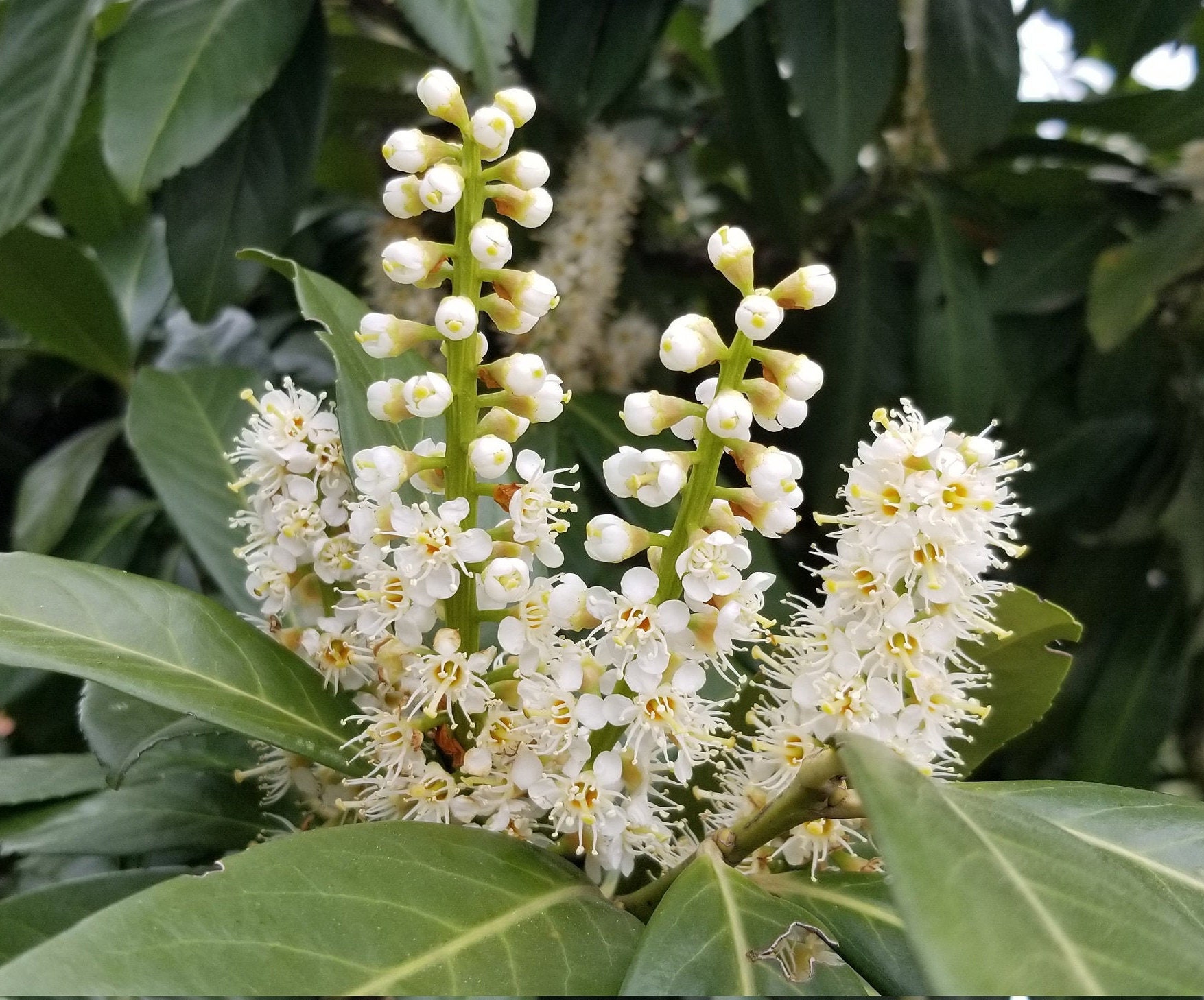
Cherry Laurel Common Laurel English Laurel 3 Fresh Seeds Etsy
Cherry laurel plants ( Prunus laurocerasus) are attractive evergreen shrubs that produce dainty white flowers in the spring. They are part of the Prunus genus, which also includes plum, peach, and almond trees .

PlantFiles Pictures Prunus Species, Cherry Laurel, Common Laurel, English Laurel (Prunus
When planted right and in the right spot, English laurels or cherry laurels, scientifically known as Prunus laurocerasus , are exceptionally easy to grow and care for.
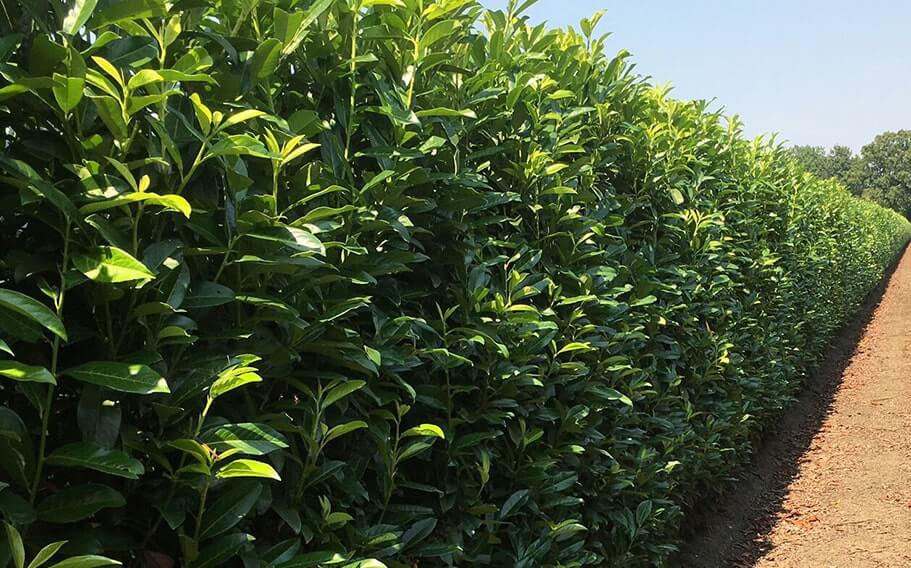
English Laurel (Prunus Laurocerasus) InstantHedge
Where to Plant Cherry Laurel . Cherry laurel is prized for its ability to grow in full sun or deep shade. In Zones 6 and 7, this shrub or small tree grows best in sun or shade, while in Zones 8 and 9, it does best in partial shade to full shade. Cherry laurel prefers loose, well-drained, fertile soil but tolerates poor, sandy, and clay soil.